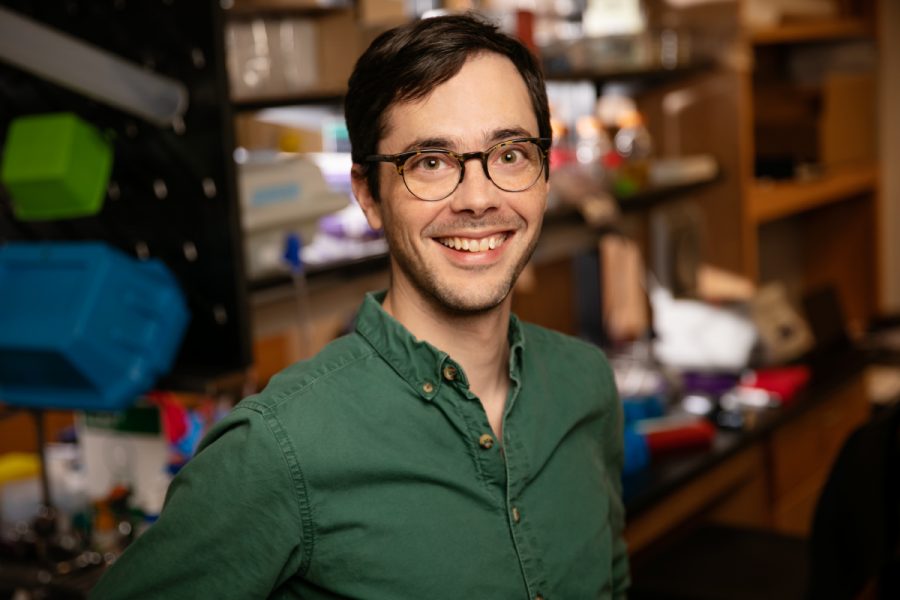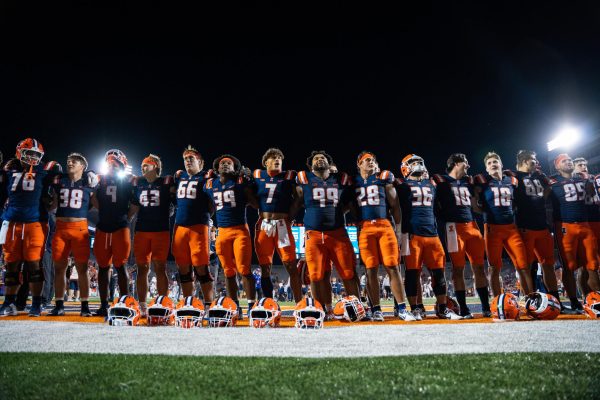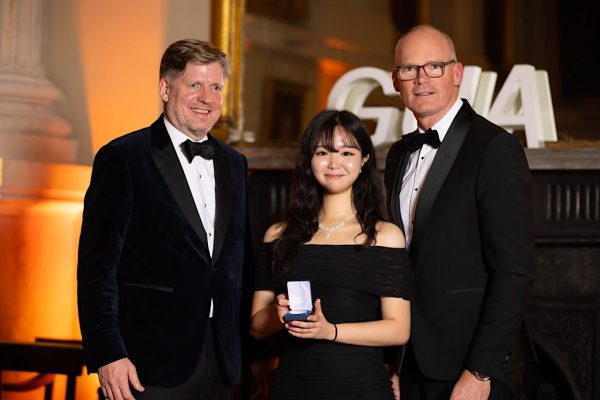UI collaborates with NIH to research optimal COVID testing method
Photo Courtesy of University of Illinois
Illinois professor Christopher Byron poses for a professional headshot. Byron is leading a team that is trying to understand how COVID-19 saliva tests work on patients in the early stages of the virus.
Mar 4, 2021
In order to prevent the spread of COVID-19 efficiently, a testing system that identifies patients in the early stage of their disease is essential. In light of this, a collaborative project between the University of Illinois and the National Institute of Health inquires the optimal way to employ a COVID-19 diagnosis test.
“One of the huge shortcomings of our response to this virus was the effective deployment of diagnostic testing resources,” said Christopher Brooke, assistant professor in LAS at the University. “If that had been done capably at an appropriate scale early, I think we would’ve saved a lot of lives.”
Brooke is the principal investigator for the collaborative project. According to Brooke, most studies are done after a patient has been treated at the hospital and late in the infection process. In contrast, the aim of his group is to understand how the tests work on patients in the early stages. With the University’s frequent testing policy, Brooke can reach out to students who have very recently tested positive or put into quarantine through contact tracing.
“You’re not contagious the whole time you’re infected,” Brooke said. “A lot of people will test positive a long time after they are infected, well after they stop being contagious. ”
Brooke’s group is part of the Clinical Research Core at the University of Massachusetts Medical School and funded by the Rapid Acceleration of Diagnostics project at the NIH.
Get The Daily Illini in your inbox!
“The NIH took the little study we have planted here and elevated it several orders of magnitude,” Brooke said.
Although saliva tests use a non-invasive sample extraction method, it requires a processing facility and a few hours of wait time to process the results. On the other hand, rapid antigen tests, where the tests use nose swabs to extract the samples, can be done quicker with little machinery. However, it’s still not totally understood how good a job they do at detecting people while or before they are contagious, according to Brooke.
“This research is giving us a high-resolution picture of how this virus replicates over time in people and how well it’s being picked up by different testing methods,” Brooke said. “We can quantify how well rapid antigen tests work compared to what we’re doing on campus. This can help guide how these tests can be used most effectively to block spread. ”
Brooke’s group is processing the large amount of data they have collected and moved away from its preliminary stage. Due to the large number of volunteers and the complexity of monitoring test samples, their group is currently not looking for new participants.






